CUBA. Cuba a peaceful paradise? For tourists, definitely. A bunch of old-timers, cigars, straw heads and cheap cocktails easily create the illusion of a peaceful idyll that hails from way back when. The photogenic portraits of Ernesto ‘Che’ Guevara popping up on unexpected places are the icing on the cake. But they are not just art. Who looks closer, recognizes a persistent state propaganda. In this photo report, Nele Goutier takes you on a journey to some of the most interesting propaganda sites.
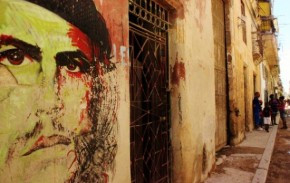
Havana Vieja (Cuba)
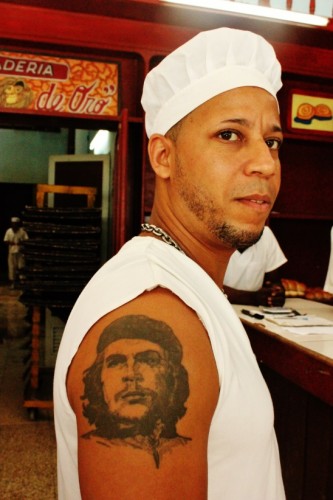
Havana. The Che tattoo is high fashion on the Cuban streets.
Commercials and adverts are forbidden in Cuba, but Che’s portrait appears all the more. It is without a doubt the most popular portrait in Cuba and probably one of the most famous one’s around the world. It does not only appear on many murals, but on t-shirts, lighters, bags, fans and even tattoos – anything that brings money on the table. Ironically, the apostle of a non-capitalistic world is extraordinarily successful on the capitalistic market.

Havana
Some claim that the socialist state of Cuba couldn’t have survived with or without ‘el Che’ (‘the mate’). He was one of the twelve guerilla-fighters who survived the secret invasion of Cuba and who led the revolution that eventually dethroned dictator Batista in 1959 after a three-year guerilla war. Che left Cuba only six years later to fight for communistic revolutions from Congo to Bolivia. Rumor has it that the actual reason behind his departure was a fall out with Fidel Castro. Whatever the case, Castro has found the ultimate propaganda character in Che Guevara, who got hyped especially after he was executed by the CIA in Bolivia in 1967. A dead man cannot tarnish his image, thus Castro had an easy task maintaining the myth of a brave and honorable hero.
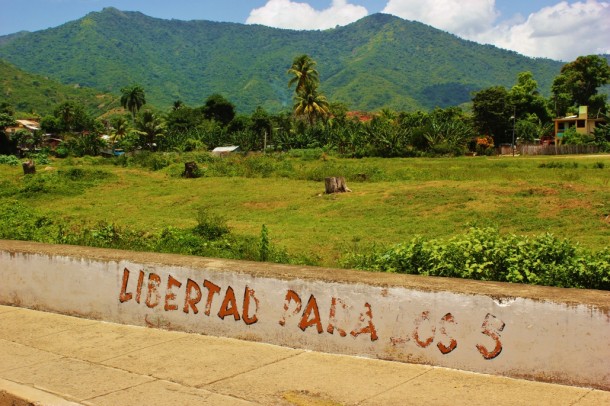
El Cobre
The Castro’s found more national heroes in five Cuban spies that were arrested in Florida in 2001, and sentenced seventeen to thirty years in jail. The ‘brave warriors’ infiltrated in the Cuban diaspora in Miami to sabotagecontra-revolutionary actions. “Freedom for the five” is a message actively spread by the government ever since the arrest. It appears along highways, in supermarkets, airports, schools and on banners during the protest marches that the regime organizes regularly. The rest of the world has never heard of them, but ‘the five’ are a hot news item in Cuba; day-after-day ever since 2001.
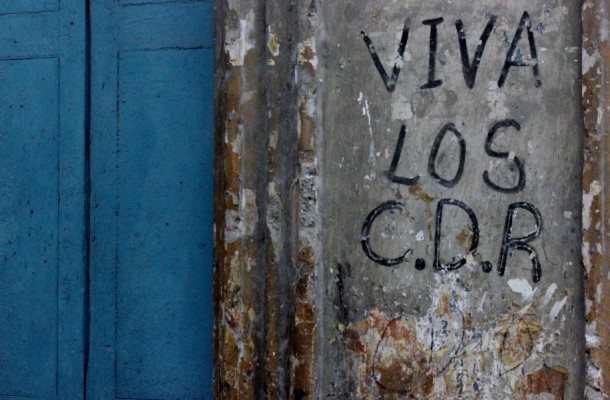
Havana
“Long live the Committees for Defense of the Revolution.” Formed in 1960, the CDR’s are the eyes and ears of the communistic regime and are located in each and every block all over the country. CDR-employees have the responsibility to monitor, control and report about all that’s going on in their block. Who goes where, who buys what, who spends time with whom, and – most importantly – who is says what about the revolution?
Criticism about the regime has not seldom led to lengthy imprisonment, unemployment and physical abuse. Yet, the number of people willing to express their critical opinions openly, even in front of a camera, is surprisingly high. The most common complaint: the economy. The prices are too high, the wages too low. It’s a safe criticism because the one to blame, argues the regime, is the United States. All misery is considered a direct result of the American boycott. Dissatisfaction about the revolutionary leaders is a much more risky and thus exceptional. One of my friends explains: “You can shake the chain, but you cannot touch the monkey.”
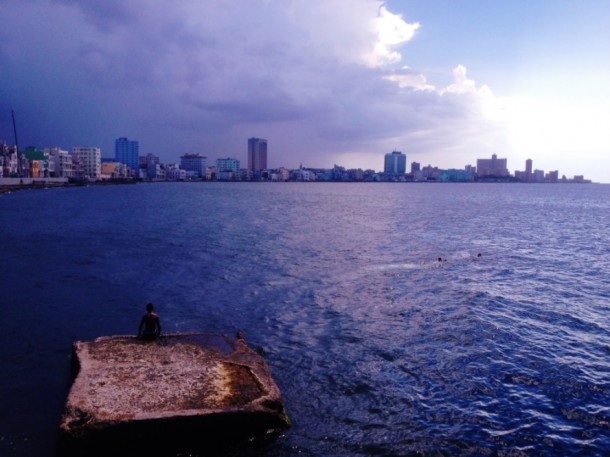
Havana
Havana’s skyline seen from el Malecón, where many Cubans risked their lives in an attempt to leave the country by boat in search for the coasts of Florida – only 90 miles away, yet so unreachable. In 1994 a rumor that Cubans would be allowed to leave Cuba legally shook up the country. Thousands of people gathered within a few hours, screaming “Libertad! Libertad!”. Fidel Castro rushed over personally to clarify the misunderstanding: Cubans were not allowed to travel abroad. History has shown that they wouldn’t be for almost 20 more years. Travelling freely was first allowed only in 2013.
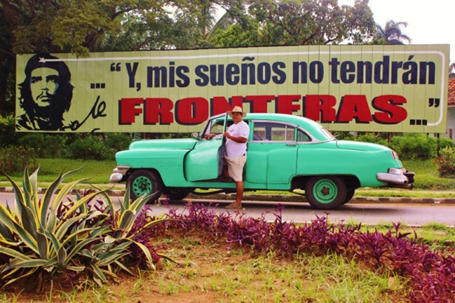
“In my dreams there are no borders” – a somewhat ironic message in a country with such tough travel restrictions. Despite the new legal opportunities, travelling abroad is still unaffordable for the bulk of Cubans.

Kids playing with guns – Santiago.
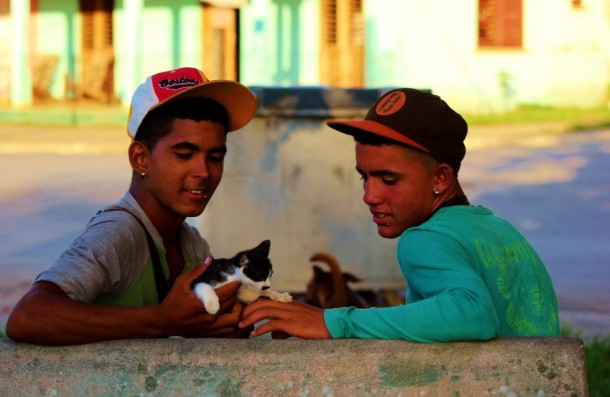
Cats and caps – Viñales.
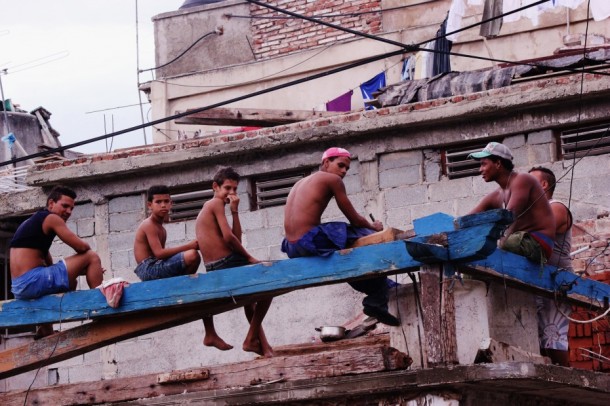
A rooftop rest – Santiago
Cuba’s future is unclear. The Castro’s are getting older by the day; they won’t live forever. Even though speculations are plenty, no-one knows what will happen when both pass away. But one thing that is certain: the Cuban future is in the hands of the young generations.

Two generations – Havana.

Michael on the bicycle, a birthday present from his aunt in Miami – Havana.
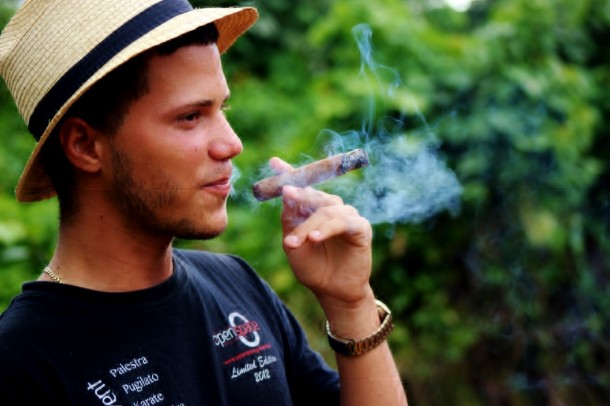
A young farmer – Viñales
Through tourists, foreign investment and the stories of the lucky few who went abroad, the youth has to do with an increasing amount of foreign influences. At the same time they are easily moldable by state propaganda. The vast majority cannot afford internet access (an hour in an internet café costs almost half a month’s salary) and has no information sources other than those provided by the state. The question remains which impact will be stronger. Will foreign influence end up ‘contaminating’ Cuba despite all attempts to keep whatever is Cuban inside and whatever is not out? Only the future can tell.

